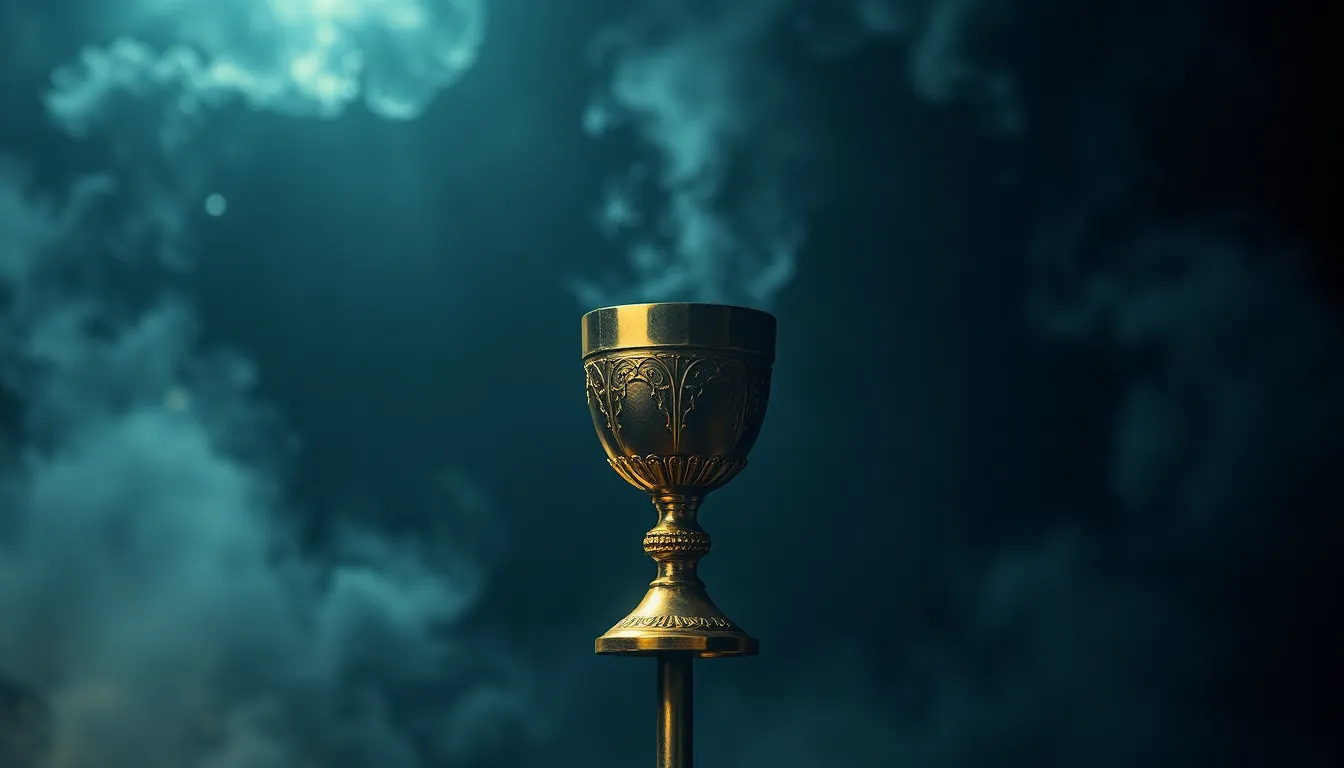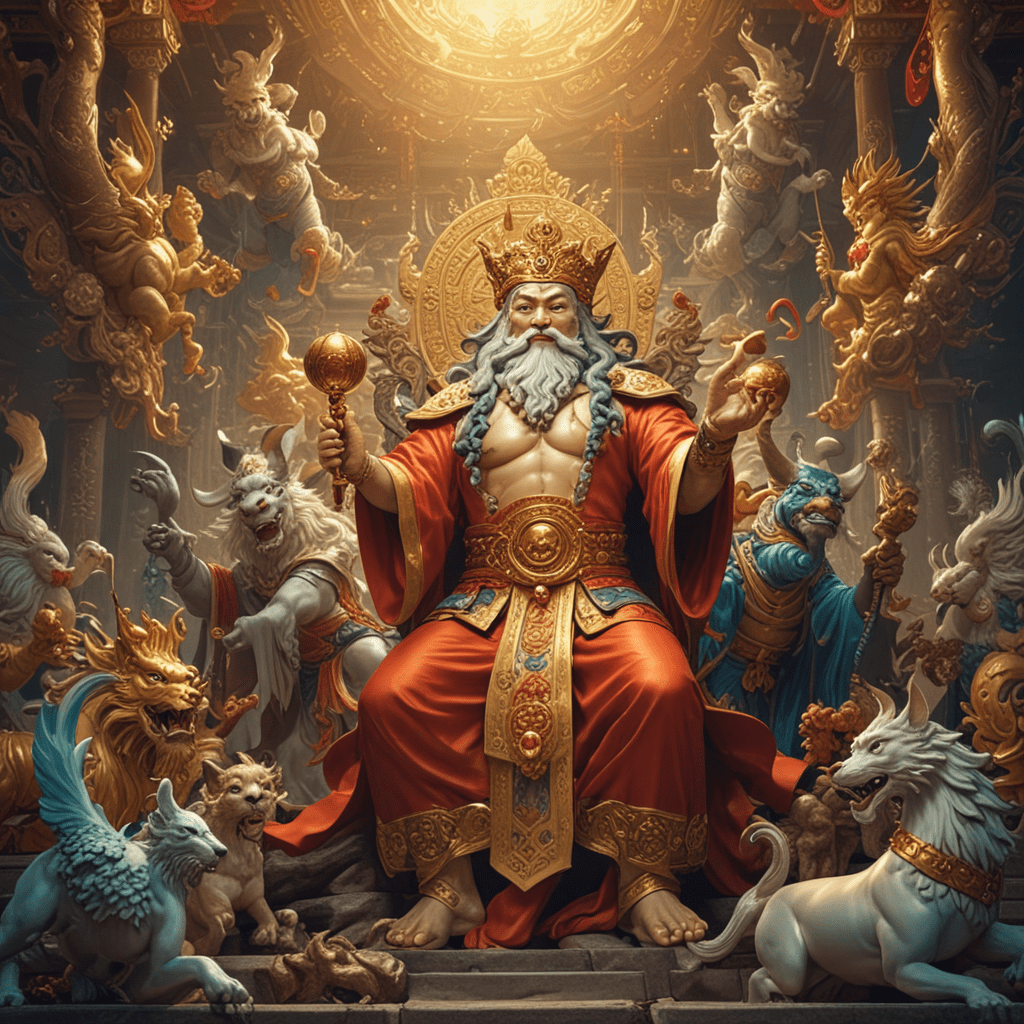The Holy Grail: Searching for the Ultimate Sacred Relic
Introduction to the Holy Grail
The Holy Grail is one of the most enduring symbols in Western mythology and religious tradition. Often depicted as a chalice or cup, it is imbued with profound significance, representing not only a physical object but also an ideal of purity and divine grace. Throughout history, the Grail has captured the imagination of many, becoming a central theme in literature and popular culture.
In various stories, the Grail is portrayed as the object of quests and adventures, symbolizing the ultimate prize that heroes strive to attain. This quest is often depicted as both a literal search for a physical object and a metaphorical journey towards spiritual enlightenment.
Historical Origins of the Holy Grail Legend
The legend of the Holy Grail can be traced back to medieval texts, with early references appearing in the works of writers such as Chrétien de Troyes and Robert de Boron. Chrétien’s poem “Perceval, the Story of the Grail,” written in the late 12th century, is one of the earliest known accounts that introduces the Grail into Arthurian legend. In this tale, the Grail is a mystical object that brings healing and sustenance.
Robert de Boron later expanded on this narrative in his work “Joseph d’Arimathie,” where he connects the Grail to the Last Supper and positions it as the cup used by Jesus Christ. These early stories established the Grail as a central element in the tapestry of Arthurian lore, intertwining themes of chivalry, spirituality, and the quest for divine truth.
The Grail in Christian Tradition
In Christian tradition, the Holy Grail is often associated with the Last Supper, where it is believed to have contained the blood of Christ. This connection has led to various religious interpretations, viewing the Grail as a symbol of Christ’s sacrifice and a vessel of divine grace.
The impact of these interpretations on Grail lore is profound. Many see the quest for the Grail as a metaphor for the search for spiritual fulfillment and enlightenment. The idea that the Grail embodies the connection between humanity and the divine has cemented its place in religious discourse.
The Grail in Arthurian Legend
The quest for the Holy Grail is a pivotal element of Arthurian legend, prominently featuring King Arthur and his Knights of the Round Table. The narratives surrounding the Grail often highlight the virtues of chivalry, bravery, and moral integrity.
- Sir Galahad: Known as the purest knight, Galahad is often portrayed as the one who successfully finds the Grail, symbolizing the ideal of purity.
- Percival: Another key figure in the Grail quest, Percival represents the journey of self-discovery and the challenges faced on the path to enlightenment.
These characters and their stories illustrate the profound moral and spiritual lessons intertwined with the Grail’s symbolism, as they navigate tests of character and faith in their quests.
Symbolism and Interpretation of the Grail
The Holy Grail is rich in symbolism, often interpreted as a representation of divine grace, purity, and enlightenment. Across various cultures and religions, the Grail has taken on different meanings, reflecting the universal human quest for meaning and connection to the divine.
- Divine Grace: The Grail is seen as a conduit for God’s grace, offering healing and sustenance.
- Purity and Innocence: The quest for the Grail often emphasizes the importance of purity of heart and intention.
- Enlightenment: The search for the Grail can symbolize the pursuit of knowledge and spiritual awakening.
This multifaceted symbolism makes the Grail a powerful metaphor in literature and art, resonating with individuals across different cultures and eras.
The Quest for the Holy Grail: Fact vs. Fiction
The historical quest for the Holy Grail has inspired numerous expeditions and claims of discovery. Throughout the ages, many have sought to uncover the physical location of the Grail, often driven by tales of its miraculous powers and historical significance.
From the medieval period to modern times, various archaeological and scholarly perspectives have emerged regarding the Grail’s existence. Some scholars argue that the Grail is a purely mythical construct, while others believe it could be based on real historical artifacts. Key points of discussion include:
- Historical artifacts purported to be the Grail, such as the Holy Chalice of Valencia.
- Literary analysis of texts that reference the Grail and their historical context.
- The role of folklore in shaping the narrative around the Grail.
Modern-Day Grail Seekers
In contemporary society, the pursuit of the Holy Grail continues, with numerous individuals and organizations dedicated to finding it. These modern-day Grail seekers range from amateur historians to serious researchers, each motivated by their own reasons:
- Spiritual Exploration: Many seek the Grail as a means of deepening their spiritual journey.
- Historical Research: Scholars and archaeologists pursue the Grail to uncover historical truths and artifacts.
- Commercial Interest: Some exploit the Grail’s allure for entertainment and profit.
The motivations behind these quests often reflect broader human desires for connection, understanding, and meaning.
The Holy Grail in Popular Culture
The Holy Grail has been a prominent theme in various forms of popular culture, influencing films, books, and video games. Its representation has shaped public perception and interest in the Grail, often blending historical elements with fantastical storytelling.
- Films: Movies like “Indiana Jones and the Last Crusade” and “Monty Python and the Holy Grail” have popularized the Grail in vastly different ways.
- Books: Literature, from medieval texts to modern novels, continues to explore the Grail’s themes.
- Video Games: Many games incorporate Grail quests, allowing players to engage with the legend interactively.
These portrayals not only entertain but also spark renewed interest in the historical and mythical aspects of the Grail.
The Grail as a Metaphor for Human Aspiration
The Holy Grail serves as a powerful metaphor for the human aspiration towards meaning, purpose, and the unattainable. It symbolizes the collective quest for understanding and fulfillment that transcends cultural boundaries.
In various contexts, the Grail embodies:
- Hope: The Grail represents the potential for achieving one’s dreams and aspirations.
- Purpose: It encourages individuals to seek their own paths and quests for personal growth.
- The Unattainable: The pursuit of the Grail reminds us that some goals may be forever just out of reach, yet the journey itself is valuable.
This metaphor resonates deeply with the human experience, reflecting our innate desire for connection and understanding in a complex world.
Conclusion: The Enduring Legacy of the Holy Grail
The Holy Grail remains a captivating symbol in contemporary society, bridging the realms of history, mythology, and spirituality. Its enduring legacy highlights the significance of myth and legend in shaping human experience and understanding.
As we reflect on the Grail’s profound impact, it becomes clear that the search for meaning—whether through historical inquiry, spiritual exploration, or artistic expression—is a fundamental aspect of the human condition. The quest for the Holy Grail continues to inspire individuals and cultures around the world, reminding us of the timeless pursuit of truth and enlightenment.



